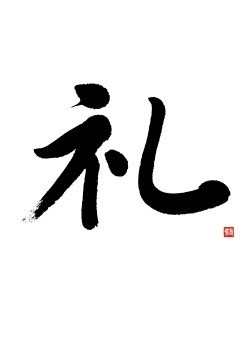The following article on Etiquette in the martial arts written by aikido historian Stanley Pranin is from Aikido Journal
One of the things I like best about this discussion of the implied promise of the bow on the part of both sides to practice within safe bounds. Thus, in the dojo , etiquette serves to create a training environment where inherently dangerous techniques can be practiced with a predictable outcome. Working as partners in the training process one of aikido’s wonderful qualities. Come join us for an intro an find out about aikido and our dojo!

The Preservation of Well-being
Last month I attended a Daito-ryu Aikijujutsu seminar conducted by Katsuyuki Kondo Sensei in Baltimore, Maryland. In the course of his instruction, Kondo Sensei made a statement that struck me as especially profound. He said, the purpose of etiquette (reigi saho) is self-defense. I have in recent years instinctively grasped the importance of etiquette, but I don?t recall ever having thought through the implications of the use or failure to observe the rules of etiquette.
Let’s consider for a moment some definitions. First, etiquette: the forms required by good breeding or prescribed by authority to be observed in social or official life: observance of the proprieties of rank and occasion. Also, the related term, manners: habitual conduct or deportment in social intercourse evaluated according to some conventional standard of politeness or civility. Finally, custom: a long-established, continued, peaceable, reasonable, certain and constant practice considered as unwritten law and resting for authority on long consent. (Webster’s Third New International Dictionary) In my reading of these terms, the key concept is long-observed behavior proper to a specific context whose effect is to ensure social order.
How about some concrete examples One instance of proper etiquette in a martial arts context would be the placing of one’s sword on the right side as a symbol of peaceful intent. The sword is carried and drawn from the left side. Positioning it on the right side made it difficult to access quickly, thus rendering the weapon ineffective. A samurai seated before a superior who failed to move his sword to his right side scabbard facing outward could be immediately executed for his breach of etiquette. A similar example would be that of the military salute. I remember reading somewhere or other that the original meaning of the right-handed salute was to show that one’s weapon hand was empty and therefore posed no threat. A soldier who fails to observe such a simple gesture of respect faces disciplining according to the code of military justice.
What about etiquette inside the dojo
Many teachers I have seen over the years attach great importance to this subject. In dojos which observe strict etiquette, the teacher and students bow to each other to begin and end each class. Students also bow to each other when pairing off to train and after training together. I interpret the act of bowing in the dojo not only as a custom of respect, but also as an implied promise on the part of both sides to practice within safe bounds. Thus, in the dojo as well, etiquette serves to create a training environment where inherently dangerous techniques can be practiced with a predictible outcome.
Then there is the question of etiquette in the workplace. I speak here primarily of contemporary Western culture as the rules of behavior and accepted limits would be different in Japan and other male-dominated Asian cultures. In this age of political correctness, a male who fails to behave within the bounds of propriety and speaks or acts offensively toward a female may be hit with charges of sexual harassment. If the matter is brought before the courts by the offended party, the male perpetrator, if convicted, is subject to fines and/or imprisonment.

Recent Comments